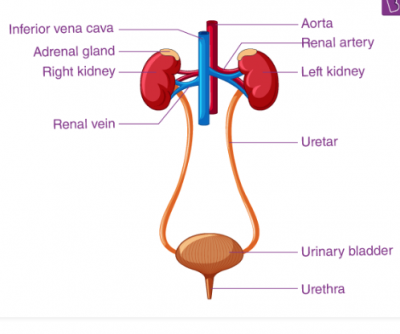
Use the diagram above to answer the question that follows
The diagram above is
The correct answer is: C
Explanation

The circulatory system is a network of blood vessels, the heart, and blood that moves throughout the body. The circulatory system's main function is to transport nutrients, oxygen, and hormones to the body's cells, and remove waste products.
The reproductive system is a collection of organs in both males and females that work together to produce offspring, primarily consisting of the gonads (ovaries in females, testes in males) which create sex cells (eggs and sperm), and accessory organs that transport and nurture these cells to facilitate fertilization and potential pregnancy.
The nervous system is a complex network of nerves and nerve cells (neurons) that control bodily functions by sending signals between the brain and the rest of the body, allowing us to move, think, feel, and regulate internal processes; it consists of two main parts: the central nervous system (brain and spinal cord) and the peripheral nervous system
The urinary system helps the body maintain balance by removing waste products like urea, extra salt, and extra water. Urea is a waste product created when the body breaks down protein from foods like meat, poultry, and some vegetables. Its function is to remove waste from the body through urine bladder, urethra, kidneys and ureters.
Parts of the urinary system
- Kidneys: Two bean-shaped organs located in the middle back, under the ribs. They filter blood to remove waste and extra water.
- Ureters: Two tubes that carry urine from the kidneys to the bladder.
- Bladder: A hollow organ in the pelvis that stores urine. When the bladder is full, it signals the body to urinate.
- Urethra: A small tube that carries urine from the bladder out of the body.
There is an explanation video available .


